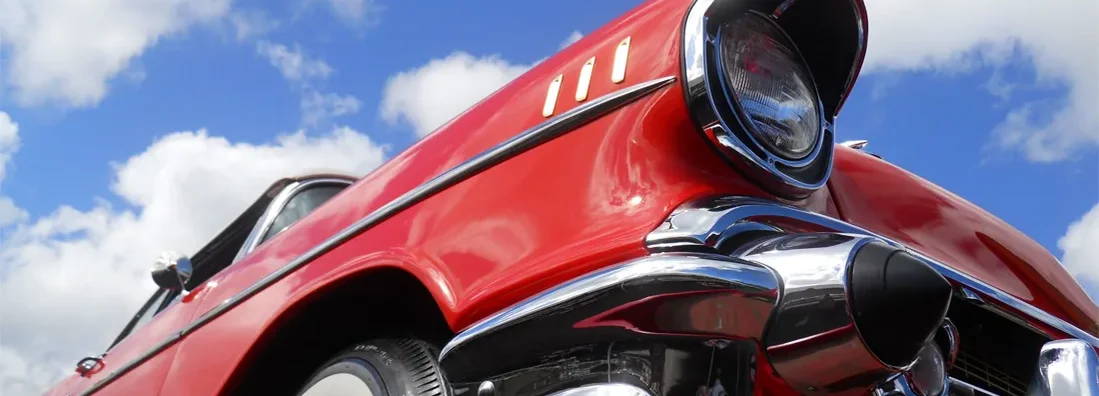10 Tips for Maintaining and Storing Your Classic Car

Owning a classic car involves more care and attention than owning another type of vehicle. Your classic car requires the proper maintenance and storage to preserve its condition and value as well as possible. But while newer cars may be easier to care for in many ways, for many drivers, they lack the appeal of a classic car.
You own a classic car for a reason, so it deserves the right kind of car insurance to help protect it. An independent insurance agent can help you find the policy you need for your vehicle. But for starters, here are 10 tips to help you properly maintain and store your classic car.
5 Tips for Maintaining Your Classic Car
Modern cars tend to require less maintenance and TLC than classic cars. As a result, it's helpful to have some handy tips for classic car maintenance at your fingertips.
1. Always Use the Right Kind of Gas and Oil
Classic cars tend to run better if their owners opt for ethanol-free gasoline and conventional oil. It's recommended to keep your gas tank at least halfway full at all times to keep your engine running smoothly.
Also, be sure to only choose the oil that provides the proper viscosity for your specific vehicle. Regularly check your oil levels and make sure to completely change your oil and filter at least once annually.
2. Check Your Tires Regularly
Tires must be in good condition for you to drive your vehicle safely. Be sure to regularly inspect your classic car's tire treads, pressure, and overall condition.
You'll also need to check the date code on the sidewall of your tires to make sure they're still within their recommended lifespan. Tires generally last between six to 10 years before they need to be replaced.
3. Check Your Brakes Regularly
You should also perform regular brake checks for your classic car before you take it out on any long road trips or prepare for a show. If you have access to an empty parking lot close by or have a long driveway, try taking your car out for a short distance and testing the brakes. If your brakes feel "squishy" when applied, they might require flushing.
Also, be sure to inspect the underside of your car for possible leaks. Leaking brake lines and hoses must be fixed immediately. Brake fluid should also be checked regularly, and its color should resemble apple juice.
4. Monitor Your Battery
Your classic car is completely powerless without a working battery. If your vehicle becomes slower to start over time, it might be time to replace your battery before it's too late.
Weak batteries without enough juice left can't properly power your vehicle, which can lead to the charging system getting damaged. It's best to be proactive and keep your battery at optimum power at all times for the overall health and safety of your classic car.
5. Stay Alert for Odors
Be on constant alert for strange or new odors coming from your classic car. Gas odors can indicate there's a leak in need of immediate attention.
Rodents can also potentially get inside your vehicle and cause damage to hoses and other components of your engine, which can lead to leaks and issues. Finally, if a rodent dies inside your vehicle, that can cause an odor on its own. If you can't locate the source of an odor, take your classic car to a mechanic for an inspection ASAP.
5 Tips for Storing Your Classic Car in the Winter
If you live somewhere with harsh winter weather, you likely won't be planning to take your classic car out on the road for quite a while. But there is some prep work needed before you can put your classic car away for months on end, especially when temperatures start dropping. Keep these tips handy to help you "winterize" your classic car for storage.
1. Get It Washed
For the best chances of properly maintaining your vehicle's appearance through the winter months, you should start by handwashing and waxing it. The paint must be clear of all grime and buildup while your classic car is off the road.
Also, be sure to rinse your classic car's undercarriage to free any salt or grime buildup on its underside. Finally, clean the interior of the classic car by vacuuming and removing any possible attractions for pests, like old food crumbs.
2. Check Its Fluids
Give your classic car an oil and filter change shortly before putting it in storage to help keep your engine in tip-top shape. Get at least one drive in before putting your vehicle into storage after the oil change.
In addition, check and top off your classic car's windshield wiper fluid and go ahead and replace its antifreeze. Make sure your vehicle has a full tank of gas with a stabilizer in it before it sits for a few months.
3. Use a Battery Tender
If you don't have a battery tender, this might be an ideal time to get one. These handy devices help your classic car's radio and clock settings stay where you programmed them while your vehicle sits for months.
They also help ensure your battery starts the next time you try it. If you don't have a battery tender, a good practice is to unhook your battery cables before storing your classic car for a long period.
4. Check Its Parking Brake and Tires, and Cover It
Using a tire chock can help keep your classic car in place while it's stored. Leaving the parking brake on for an extended period of time, such as several months, can lead to your brake pads, drums, or rotors rusting together.
Flat tires can be prevented by overinflating your tires before you put your classic car away in storage. It's also advised to cover your classic car while it's sitting still to further protect it.
5. Set Traps for Pests
We've already discussed how pests like rodents can wreak havoc on your classic car. Unfortunately, they can be much more likely to get into your vehicle while it's sitting for many months in a row.
You can help prevent this from happening by using poison bait stations underneath and all around your car or by laying traps under and around your vehicle. Be sure to check all stations and traps often and change them as necessary. Finally, you can cover your classic car's air cleaner snorkel and exhaust pipes with steel wool as a barrier against pests.
Protect Your Classic Car with the Right Coverage
Having car insurance for your classic car is critical, regardless of whether it's in storage or on the road. Your classic car must at least be equipped with enough coverage to satisfy your state's minimum car insurance liability requirements. However, you'll likely also want additional types of coverage.
Adding collision coverage and comprehensive coverage to your car insurance policy can help you better protect your classic car no matter how you're using it (or not using it). An independent insurance agent can help you get set up with the right policy.
Why Work with an Independent Insurance Agent?
Independent insurance agents can help you find all the classic car insurance you need at the best possible price. They work for you, not the insurance company, so they're able to help you find the best deal. These agents shop and compare policies from multiple classic car insurance companies for you, ultimately finding you the right blend of coverage and cost.
https://www.progressive.com/answers/maintaining-and-storing-classic-cars/
